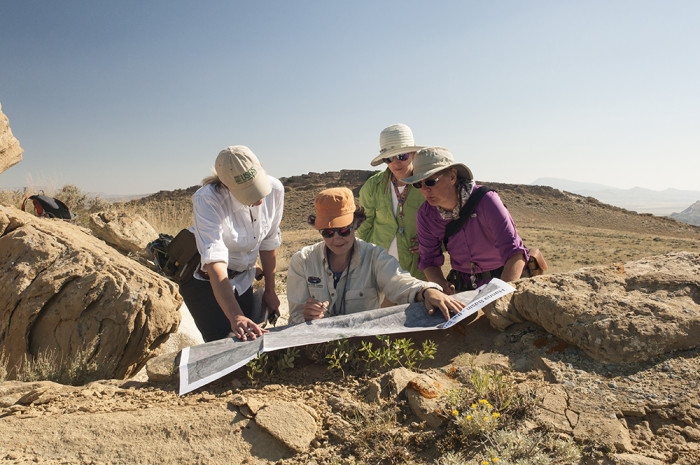The Cold Hard Numbers
In the early 1800’s, when Mary Anning discovered and excavated some of the first fossil marine reptiles from the cliffs of Lyme Regis, she had to turn them over to men for scientific study. We’ve come a long way, baby, but there are still miles and miles to go. Women represent:
- 16% of US geoscience faculty¹
- ~17% of Paleontological Society professional members (i.e. students not included)²
- 9.5% of Schuchert award winners (top PS award for a paleontologist under 40) ²
- 13% of PS Fellows²
- Not a single individual Strimple award winner (PS award for amateurs) ²
- ~5% of PS officers in the 100 year history of the society²
Two other statistics and an anecdote:
- The median salary for a woman with a PhD in geoscience is $10K less than for a man. This equates to women earning ~88% of what men do.³
- A 2012 study published in a high-profile, peer-reviewed scientific journal showed that female applicants for lab manager positions were less likely to be hired, offered a lower salary, and viewed less deserving of mentorship than identical male applicants, regardless of the scientific discipline, age, sex, or tenure status of the evaluator.4
- From an opinion piece in Nature by Dr. Ben Barres, a female-to-male transgendered neurobiologist: “Shortly after I changed sex, a faculty member was heard to say, ‘Ben Barres gave a great seminar today, but then his work is much better than his sister’s.’”5
Increasing the participation of women in science is a complex problem that likely stems from many different factors. None of which include lower scientific aptitude in women. Rather, recent research emphasizes the importance of repeated exposure to cultural stereotypes.4,6 Let’s do a quick thought experiment:
- What do you immediately picture when you hear the word, “scientist”?
- What do you immediately picture when you hear the word, “paleontologist”?
- List as many female scientists as you can.
- List as many fictional female scientists as you can. Put a check next to any that might inspire a child/teenager to become a scientist when she grows up.
Now you know why we need The Bearded Lady Project.

References cited:
- Holmes, M. A., O’Connell, S., Frey, C. & Ongley, L. Gender imbalance in US geoscience academia. Nature Geoscience 1, 79-82 (2008).
- Stigall, A. Women in paleontology: Where are they? Priscum: Newsletter of the Paleontological Society 20, 1-3 (2013).
- NSF & NCSES. Characteristics of Scientists and Engineers in the United States: 2008. (2013).
- Moss-Racusin, C. A., Dovidio, J. F., Brescoll, V. L., Graham, M. J. & Handelsman, J. Science faculty’s subtle gender biases favor male students. Proceedings of the National Academy of Sciences 109, 16474-16479 (2012).
- Barres, B. A. Does gender matter? Nature 442, 133-136 (2006).
- Lai, C. K., Hoffman, K. M. & Nosek, B. A. Reducing implicit prejudice. Social and Personality Psychology Compass 7, 315-330 (2013).